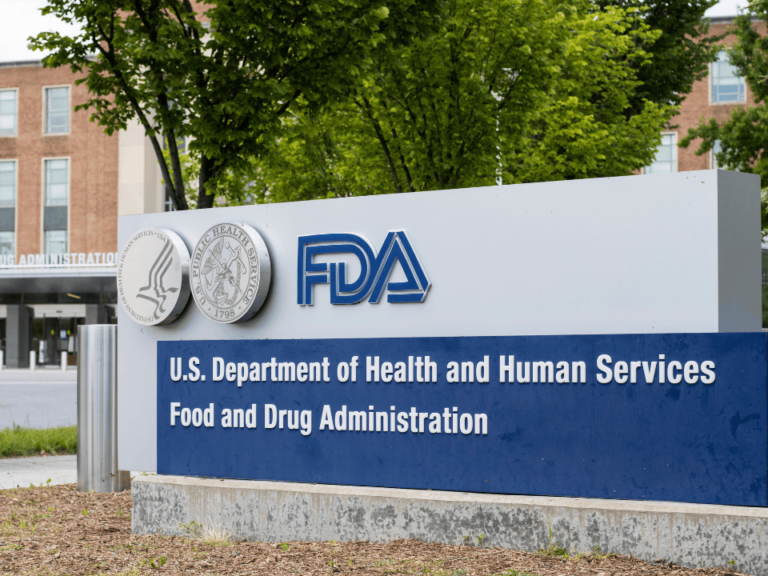As more targeted cancer therapies hit the market, the maximum tolerated dose approach to cancer drug development no longer makes sense, said Brian Booth, director of FDA’s Division of Cancer Pharmacology I, at the April 21 meeting of the FDA Oncologic Drugs Advisory Committee.
ODAC discussed survival decrements observed in six post-marketing randomized controlled trials of phosphoinositide 3-kinase (PI3K) inhibitors in indolent NHL or CLL (The Cancer Letter, April 15, April 22, 2022).
Dose exploration—or lack thereof—is an important consideration in addressing the toxicity of drugs, FDA officials said at the meeting that was focused on PI3K inhibitors.
“Pursuing the MTD approach with these types of drugs doesn’t make sense, especially for drugs with longer survival [which] will require longer periods of continuous drug treatment,” Booth said. “In these settings, managing the toxicity of the drug has much greater significance.”
Unlike cytotoxic therapies, targeted therapies create an exposure-response curve where efficacy plateaus earlier—meaning that more drug isn’t always better, Booth said.
“Generally, we maximize efficacy before toxicity,” Booth said. “This especially is true if we use the MTD approach—the efficacy has plateaued, and increasing the dose further does not result in any further improvement in efficacy.”
ODAC voted unanimously to affirm that randomized data are warranted with an assessment of overall survival to support the evaluation of benefit-risk of PI3K inhibitors in patients with hematologic malignancies. FDA cited the sponsors’ reliance on the MTD among the fundamental problems in clinical trials of this class of drugs.
A video of the full ODAC meeting appears here.
A transcript of Booth’s remarks on dose optimization follows:
With respect to dose selection for oncology, we generally pursue the MTD approach. However, we have many examples of oncology drugs with significant toxicities, including the PI3K inhibitors that require dose modifications or dose interruptions in the post-approval setting.
We need to reconsider our approach to dose selection and think more about dose optimization for oncology drugs, especially with the current therapeutic options that are available, such as targeted therapies.


To illustrate this thought, the figure on the left depicts the exposure-response curve for cytotoxic chemotherapy. Given the mechanism of action, you can see that the curve for toxicity closely parallels the curve for efficacy. It’s not possible to distinguish between the two curves. In this case, it makes sense to pursue the dose based on the MTD concept—this maximizes efficacy, although at the expense of managing toxicity.
However, with targeted therapies, such as the PI3Ks or TKIs, the curves on the right are typical of exposure-response relationships that we see. Generally, we see an earlier plateau for efficacy, followed by a more gradual, later increase in toxicity. So, pursuing the MTD approach with these types of drugs doesn’t make sense, especially for drugs with longer survival [which] will require longer periods of continuous drug treatment.
In these settings, managing the toxicity of the drug has much greater significance.


But what are the implications of these exposure-response relationships for dose optimization? Generally, we maximize efficacy before toxicity. This especially is true if we use the MTD approach—the efficacy has plateaued and increasing the dose further does not result in any further improvement in efficacy.
In this context, we can say that the exposure-response is flat. However, the exposure-response for toxicity is still the rising portion of the curve, and changes in dose can impact the rate and severity of adverse events. In these situations, we may be able to reduce the dose without impacting efficacy significantly, while reducing adverse events.
Recently, the Oncology Center of Excellence launched Project Optimus. This project was initiated based on the recognition that many oncology drugs require dose adjustment and may lead to suboptimal therapy. The mission is to find doses of oncology drugs that maximize efficacy and tolerability. One of the specific goals is to leverage the non-clinical and clinical data to better select these doses.


The traditional approach to dose selection in oncology based on the finding of the MTD is depicted. Generally, there is a dose escalation trial designed to identify the dose, the DLTs (dose-limiting toxicities), and subsequently the MTD.
The MTD is then used in subsequent registration trials, which may be randomized control trials or, frequently, single-arm trials that are part of the accelerated approval pathway. But in the MTD approach, the assumption is that higher doses will have higher efficacy, which then maximizes efficacy at the expense of toxicity.
Generally, a three-plus-three design is used, so there are a limited number of patients to assess the pharmacokinetics and pharmacodynamics, safety, and efficacy at each dose level. The observation period to assess the toxicities is often too short to obtain useful information on dose modifications, including dose interruptions from reductions and discontinuations.


In contrast, the dose optimization strategy, like the one depicted here, has a higher chance of identifying the dose with a benefit that outweighs the risk.
We begin with the same dose escalation design, but with the purpose of better understanding the pharmacokinetics, pharmacodynamics, safety, and efficacy at each dose level. This will often include dose expansion of several cohorts to generate these additional data at promising dose levels. Further, in this paradigm, longer periods of observation are incorporated to assess adverse events, including the onset of delayed toxicities, in contrast to the MTD approach.
Additionally, for dose optimization, there are some more specific recommendations that should be evaluated in order to better select the dose or doses for development. Consideration should be given to nonclinical data, such as in vitro or in vivo receptor occupancy or enzyme inhibition, because this provides support that the concentrations of the doses selected are in the right range.
In early trials, sufficient PK sampling in a sufficient number of patients is necessary to adequately characterize the pharmacokinetics in order to understand the behavior of the drug and any PK limitation, such as absorption, and to develop exposure-response relationships.
This stage is also important in identifying exposure-response relationships with biomarker data, as well as with the safety and efficacy data in early trials, to better assess optimal doses.
These exposure-response relationships can also be used to predict patient outcomes by dose level, which can also aid in selecting doses for development. Unlike the MTD approach, there should be some expansion of several promising dose cohorts with sufficient numbers of patients to better understand and evaluate the PK safety and the efficacy.
Another important approach that should be considered is to conduct randomized parallel dose response trials, which ensures similarity of patients at each dosage and aids in the interpretation of dose and exposure-response relationships.
What are the implications of these exposure-response relationships for dose optimization? Generally, we maximize efficacy before toxicity. This especially is true if we use the MTD approach—the efficacy has plateaued and increasing the dose further does not result in any further improvement in efficacy.
Brian Booth
Finally, another possibility that can be considered is to include multiple doses as part of the registrational trial.
With respect to dose optimization combinations, this can get quite complicated, but the following are some general recommendations to consider. First, simply taking the approved monotherapy dosage and applying it in combination with other drugs is likely to cause excessive toxicities, and some dose exploration is warranted.
When combining two drugs, a thorough understanding of PK, PD, safety, efficacy, and the exposure-response relationships for safety and efficacy for each drug should have been assessed and described for monotherapy.
For two new drugs, there should be dose exploration with different levels of each drug—it may be appropriate to conduct more dose studies with the drug that appears to be more active or more toxic. If a new drug is to be added to an add-on therapy, it may be appropriate to consider some dose exploration with the established regimen in addition to the new drug.
Another point that should be considered is that in the combination setting, smaller dose increases in those tested in monotherapy dose escalation trials should be assessed. As with monotherapy, exposure-response curves for safety and efficacy should be evaluated in each drug in combination.
Lastly, occasionally drug-drug interactions occur between two drugs in combination, which result in higher exposure than anticipated, particularly at steady state, which may cause unexpected or unwanted toxicity. The dose exploration optimization studies should also provide a provision for assessing DDI liability.












